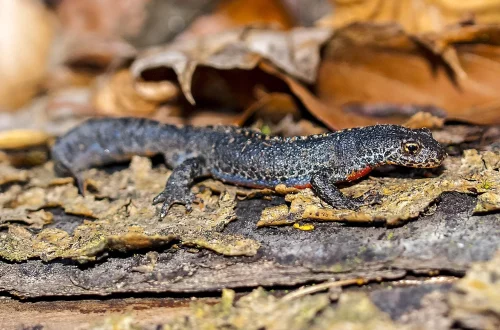
The Unlikely Friendship Between Cats and Chickens Explained
The world of animals is filled with surprising relationships that challenge our conventional perceptions. Among them, the friendship between cats and chickens stands out as particularly intriguing. Typically viewed as predator and prey, these two species often exhibit unexpected camaraderie that leaves many observers puzzled. While cats are generally seen as solitary hunters, and chickens as social foragers, their interactions reveal a more nuanced reality.
In various settings, from rural homesteads to urban farms, there are countless stories of cats and chickens coexisting harmoniously. Some cats can even be seen grooming and playing with their feathered friends, showcasing a bond that transcends instinctual behaviors. This unlikely friendship raises questions about animal behavior, socialization, and the environments that foster such unique relationships.
As we delve deeper into this fascinating dynamic, we will explore the nature of their interactions, the psychological and environmental factors that contribute to their friendship, and what we can learn from these cross-species connections. Understanding the relationship between cats and chickens not only enriches our knowledge of animal behavior but also highlights the beauty of companionship in unexpected places.
Understanding Animal Instincts and Social Behaviors
To comprehend the friendship between cats and chickens, it is essential to first explore the instincts and social behaviors of both species. Cats are natural predators, equipped with sharp claws and keen hunting skills. In the wild, they primarily hunt small mammals and birds, including chickens. However, domesticated cats often exhibit different behaviors when raised in a controlled environment.
In many cases, cats develop social bonds with other animals, including chickens, especially when they are introduced at a young age. Socialization plays a crucial role in how animals interact with one another. Kittens that grow up around chickens may not see them as prey but rather as companions. This early exposure can lead to a more relaxed demeanor, allowing for playful interactions instead of predatory instincts.
On the other hand, chickens are social creatures that thrive in flocks. They communicate through a variety of vocalizations and establish a pecking order within their groups. This social structure is vital for their survival, as it helps them to coordinate activities and identify threats. When chickens are raised alongside cats, they may recognize the cat as a non-threatening member of their environment, especially if the cat shows no aggression.
Moreover, the environment in which these animals are raised significantly impacts their behavior. A calm, secure setting allows both species to explore their curiosities without the fear of attack. In such environments, cats may engage in grooming behaviors with chickens, while chickens may approach cats out of curiosity. This mutual comfort fosters a unique friendship that defies traditional predator-prey dynamics.
The Role of Environment in Fostering Friendships
The environment plays a pivotal role in shaping relationships between different animal species. In the case of cats and chickens, certain conditions can enhance their potential for friendship. For instance, free-range settings where both animals can roam freely tend to encourage positive interactions. In such environments, cats and chickens can observe each other from a distance, gradually building trust.
When chickens are allowed to roam freely, they exhibit natural foraging behaviors, scratching and pecking at the ground. Cats, being curious creatures, often find themselves intrigued by the chickens’ activities. This curiosity can lead to playful encounters where cats may chase chickens in a non-threatening manner, mimicking their hunting instincts without the intent to harm.
Additionally, the presence of ample space and enrichment opportunities allows both species to engage in natural behaviors. For example, providing hiding spots, climbing structures, and perches can help create a stimulating environment. Cats may climb to higher vantage points to observe the chickens, while chickens can utilize their natural instincts to explore and forage.
Furthermore, the relationship can be enhanced through positive reinforcement. When introducing a new cat to a flock of chickens, gradual introductions can be beneficial. Allowing the cat to observe the chickens from a distance while rewarding calm behavior can help build trust over time. As the cat becomes accustomed to the chickens, interactions can become more frequent and less cautious.
The key takeaway is that a well-structured environment can facilitate a peaceful coexistence between these two species, transforming potential conflict into friendship. By understanding the dynamics of their environment, owners can foster relationships that may seem unlikely at first glance.
Behavioral Observations and Interactions
Observing the interactions between cats and chickens can provide valuable insights into their friendship. Many owners have reported instances where cats and chickens engage in playful behaviors, such as chasing each other around or grooming one another. These interactions can be amusing and heartwarming, offering a glimpse into the unique bond that can form between these two species.
One common behavior observed is the cat’s instinct to playfully stalk the chickens. Unlike a predatory chase, this playful stalking often resembles the behaviors seen in cat play with toys. The chickens, in turn, may respond with curiosity, pecking at the cat or flapping their wings as they engage in a playful dance. This interaction is often characterized by a lack of aggression, showcasing the underlying friendship rather than a predator-prey relationship.
Additionally, grooming behaviors can be seen between cats and chickens. Grooming is a social activity that helps strengthen bonds among animals. When a cat licks a chicken’s feathers, it can be an indication of trust and affection. This behavior also has practical benefits, as it helps keep the chicken’s feathers clean and free of debris.
It’s important to note that while these interactions can be delightful, they may not always be without risks. Cats are still predators by nature, and chickens can be vulnerable. Therefore, supervision during their interactions is crucial, especially when introducing a new cat to an established flock. Owners should be vigilant in monitoring their animals to ensure that play does not escalate into aggression.
In summary, the behaviors exhibited by cats and chickens reflect a complex relationship shaped by socialization, environment, and individual personalities. Their interactions serve as a reminder that friendships can flourish in the unlikeliest of circumstances.
Lessons from the Unlikely Duo
The friendship between cats and chickens offers valuable lessons about coexistence, acceptance, and the importance of understanding individual personalities. In our increasingly divided world, these unlikely companions remind us that differences can be overcome through patience and respect.
One of the most significant lessons is the power of socialization. Just as cats can learn to accept chickens as friends, humans can learn to appreciate diversity in their communities. Teaching children about the importance of kindness and understanding towards all creatures can foster a sense of empathy that extends beyond the animal kingdom.
Additionally, the bond between cats and chickens highlights the importance of creating supportive environments. Just as these animals thrive in spaces that encourage exploration and socialization, we too can benefit from nurturing environments that promote collaboration and friendship.
Moreover, this unique relationship serves as a reminder of the interconnectedness of all living beings. In nature, every creature plays a role, and understanding these roles can lead to a greater appreciation for the complexity of life. The friendships that form between species can inspire us to seek connections with those who may seem different from ourselves.
In conclusion, the friendship between cats and chickens is a beautiful example of how relationships can transcend instinctual boundaries. By observing and learning from these unlikely companions, we can cultivate a world that embraces diversity and fosters genuine connections.
This article is intended for informational purposes only and does not constitute medical advice. For any health-related concerns, please consult a qualified healthcare professional.




